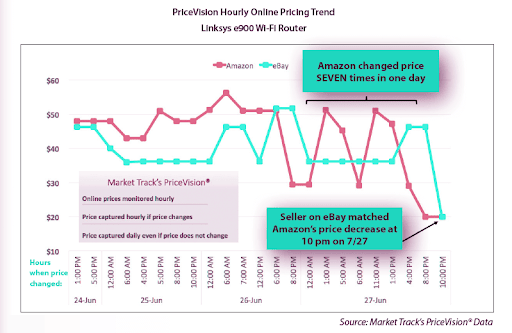E-commerce is growing so fast that, in Italy, 18.8 million Italians purchased on the Internet during 2016. It usually happens that 12% of the people on the Internet google only to get information about a specific product and 88% actually want to purchase something. Considering the wide range of items you can purchase online, Italians usually prefer durable goods; at the top there is travel (49%), then books and music (48%), fashion (43%), technology (32%), and tickets for concerts/sports (32%). At the bottom of the consumer goods, we find beauty (25%), wine and spirits (9%), food delivery (6%), goods for children (6%), and fresh food (2%).
The fast growth of e-commerce brings new challenges to retailers, however. There are 2 factors that generally have an impact on the retailer’s e-commerce success:
1. Volatility
Prices of products sold online are unpredictable. Customers can search for a product and see that it has a certain price at that moment, and then search for it again the same day and see that the price has changed. Amazon.com is very famous in this regard for changing prices very often during the day. In the graph below, it is relevant that the price of the Linksys e900 Wi-Fi Router changed over 7 times in 24 hours. For shoppers there’s no way to know or predict these changes.

Price volatility isn’t just a headache for customers. Retailers find themselves forced to use a specific tool that helps them to change prices several times a day in order to keep up with the competition, especially Amazon.
The rapidity of price fluctuation has made impossible for companies to predict when the price of a certain product will rise or drop. But this information is vital if retailers want to protect the value of their business and be competitive. Customers have so many options when it comes to buying online, so make sure you offer them the best deal and this will put you in a successful position.
2. Brand protection
Protecting the brand is becoming very difficult on the Internet. The value that the brand has built up through years could be destroyed with a snap of the fingers if it doesn’t pay attention to who is selling its products online. What’s more, the Internet is full of counterfeit products that have a lower price and quality compared to the originals. Counterfeit products are easy to find on the Internet and retailers can enter online commerce very easily and get customers worldwide.
Using an AI tool like Competitoor can help you find where your products are sold and at what price. You can start now by clicking this link.